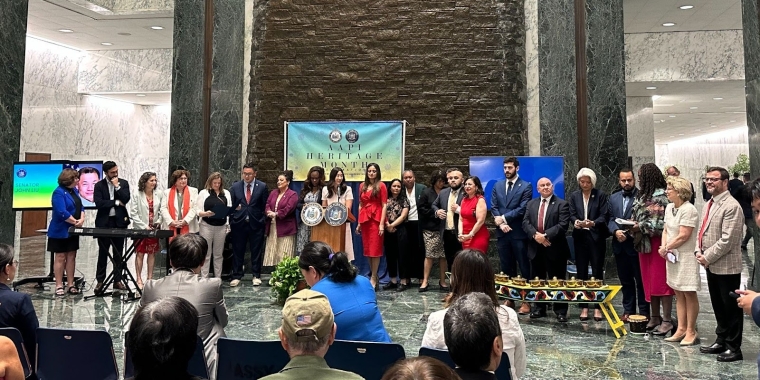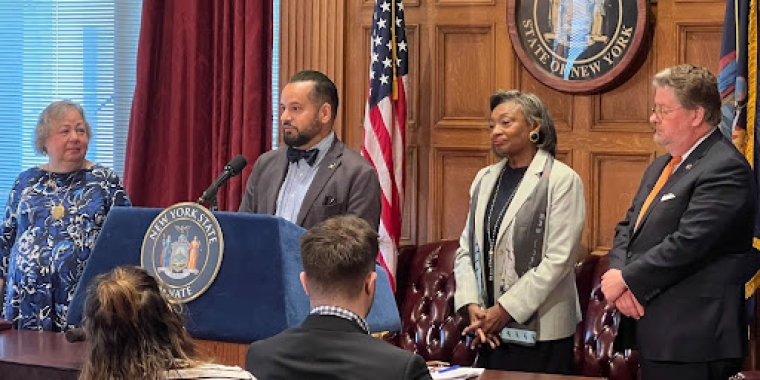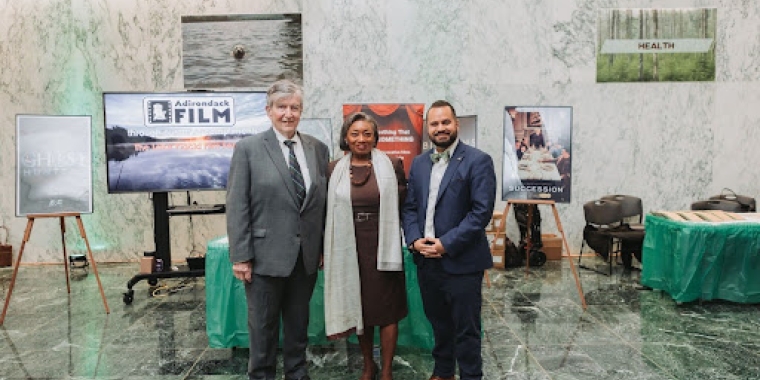
Saving Arts Education from Politics
Gotham Gazette
by José M. Serrano
July 6, 2009
CLICK HERE for the article on the Gotham Gazette website.
I fear arts education may become the next casualty of the Albany war.
Last week I came out in support of a bill to continue, but amend, mayoral control of the city's public schools. As a fierce advocate for arts in the classroom, I was moved by the bill's establishment of a citywide council to advise, comment and issue reports on arts-related policies in our school system. Unfortunately, with the lack of deliberation and dialogue in the capital right now, we might not have the chance to vote on the best legislative proposals.
According to the Department of Education's own 2007-2008 Arts in Schools Report only 8 percent of city elementary schools offer instruction in all four art forms (dance, music, theater and visual arts) annually, and less than half of New York City middle schools provide the overall level of arts education required by state law. When I took over as chair of the Senate Cultural Affairs, Tourism, Parks and Recreation Committee, my first instinct was to mandate more arts education. But the real problem, I soon learned, was that our schools were not in compliance with existing law. That is why the mayoral control debate would have been -- and could still be -- an opportunity to change our ways.
The Arts Gap
The problem with arts education is not confined to the five boroughs. As reported in the Times earlier this month, a federal study has found that "music and art instruction in American eighth-grade classrooms has remained flat over the last decade." The feds surveyed 7,900 eighth-graders at 260 public and private schools throughout the country last year, asking students to discuss famous paintings, identify the sound of musical instruments, and generally show a basic command of art and music concepts. The results of this study, officially known as the National Assessment of Educational Progress in Arts, were described as "mediocre" by a member of the assessment's governing board.
The survey found that "in music and art, white and Asian students scored higher, on average, than African-American and Hispanic students, girls outscored boys, and private schools outperformed public ones." Also troubling was the fact that only 16 percent of students reported having gone with their class to an art museum, gallery or exhibit in the last year. This was a drop from 22 percent of students who reported an arts-related class trip in 1997.
What intrigued me even more than these statistics perhaps were the Times readers' reactions to them. A number of people commented that the schools should just focus on math and reading. One went so far as to say that children can get arts education "at home."
Beyond the Three R's
Are these readers correct? Perhaps it would be prudent to teach the arts only when we are confident that our young people can read, write and count proficiently, and when our society is generally more prosperous. In other words, is arts education significant, especially in a time of economic distress?
There are two answers to this question: one pragmatic and the other far-reaching, but each one absolutely linked to the other. It is well documented that arts education provides students with the ability to develop a number of skills critical to scholastic and future workforce success: self-discipline, cross-cultural understanding, teamwork, critical thinking and problem-solving. In today's economy, when young people can expect to have numerous jobs in more than one field and work with colleagues from different parts of the globe, these skills are essential. Too often we consider a broader and more substantive cultural awareness to be "optional" or "recreational," when in reality it is "vital." This awareness is key to understanding what is going on around us and in the world.
The issue of arts education brings us to the basic question of what type of society we wish to build. Today's eighth graders are the next generation of civic and business leaders. The cultural heritage of the state of New York, be it visual, architectural or musical, will be in their hands. If we want future generations to appreciate and see value in architectural icons like the Brooklyn Bridge, music forms like jazz and salsa, and painters like Edward Hopper, we need to introduce young people to them now. No matter what their ethnic, cultural or class background, a sound arts education strengthens our children's connection to their communities and to broader society.
The arts already have a proven track record of helping drive the U.S. economy out of an economic rut. In the midst of the Great Depression, President Franklin D. Roosevelt had the foresight to create Federal Project #1, otherwise known as the Works Progress Administration. The WPA generated thousands of employment opportunities for unemployed artists and writers, and helped to move the country out of the misery of the Great Depression. Of course, the WPA also produced a profound cultural legacy: magnificent structures, murals, sculptures, plays, and historical works, which we use and enjoy today.
We must hold ourselves -- our parents, our students, our elected officials, our school administrators -- accountable on arts education. For this reason, I signed onto the mayoral control amendments sponsored by Democratic Conference Leader John L. Sampson. In addition, I have introduced legislation mandating a statewide audit to monitor compliance with laws and regulations governing arts education. I have also introduced a resolution in the legislature that will designate October as "Arts Education Month." Two partners, the Center for Arts Education and the New York State Alliance for Arts Education, have joined these efforts.
No one can deny that continued and positive exposure to the arts and New York's rich and multi-faceted cultural heritage is a sound investment for our children. Let's not use our current political and budgetary challenges as an excuse to deny them this opportunity.
José M. Serrano, a Democrat, is the state senator representing the 28th Senate District, which includes parts of the Bronx and Manhattan. He chairs the Senate's Cultural Affairs, Tourism, Parks and Recreation Committee.
CLICK HERE for article on the Gotham Gazette website.



